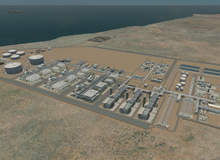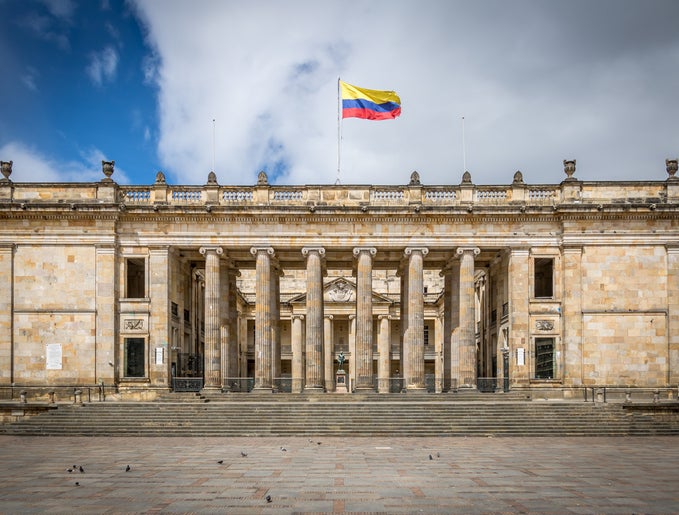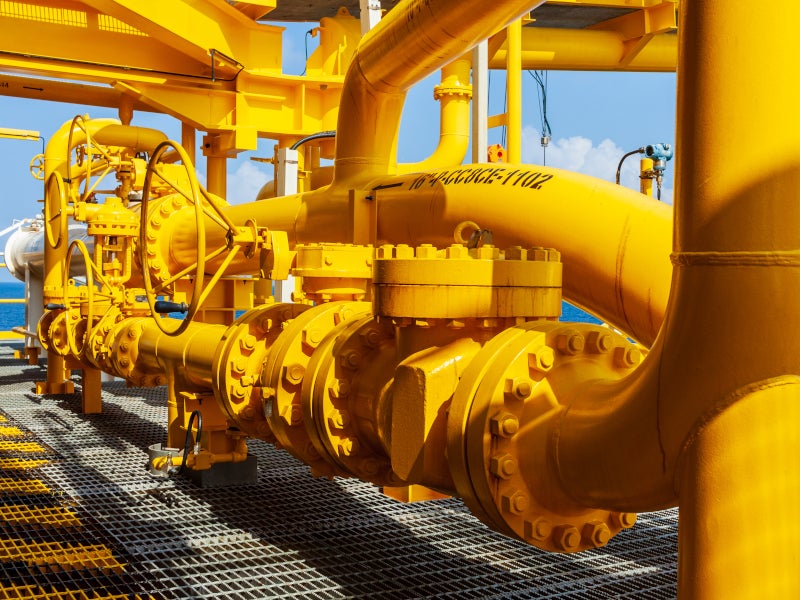
If Saudi Arabia is about oil, Australia is about gas. During early 2010, workers have been busy preparing the first stages of a huge natural gas liquefaction plant on Barrow Island off the northwest coast of Australia.
Gorgon, named after the collection of gas fields beneath the seabed nearby, is expected to become one of the world’s largest ever energy projects, seeking to tap a massive resource of some 40 trillion cubic feet of LNG, enough to power a city of one million people for 800 years.
LNG top spot
The chief partners of Chevron, ExxonMobil and Shell will between them invest A$43bn developing the project, which by 2020 is expected to propel Australia from fifth to first ahead of Qatar as the world’s biggest gas producer.
Most of Australia’s gas, like the Gorgon field, lies beneath the Indian Ocean off the isolated northern coast of Western Australia. It represents a huge export opportunity for Australia given its close proximity to gas-hungry Japan, Korea and the fast-growing markets of China and India.
See Also:
Australia’s resources minister Martin Ferguson recently declared that Gorgon, together with Woodside Petroleum’s Pluto project further south, could increase Australia’s annual LNG exports to A$24bn within the next eight years. Current exports are worth around A$6bn. The project has an approximate lifespan of 20 years, during which it is projected to reach total sales of around A$300bn.
How well do you really know your competitors?
Access the most comprehensive Company Profiles on the market, powered by GlobalData. Save hours of research. Gain competitive edge.

Thank you!
Your download email will arrive shortly
Not ready to buy yet? Download a free sample
We are confident about the unique quality of our Company Profiles. However, we want you to make the most beneficial decision for your business, so we offer a free sample that you can download by submitting the below form
By GlobalDataGreen demands
Demand is increasing for LNG as a cheaper, alternative to coal or petroleum-based energy. Gas uses between 17 and 50% less water than coal in the generation of electricity, while gas used for domestic power generation is estimated to emit as little as 30% of the CO2 emitted by coal.
The Gorgon gas refinery is being built on Barrow Island, a 202km² island around 50km off the West Australian coast. The plant will occupy some 1.3% of the land with three 5mtpa LNG trains. A significant component of the Gorgon project is the creation of international shipping facilities.
Barrow Island is a class-A nature reserve, home especially to populations of wallaroos, bandicoots and other marsupials. Further increasing environmental sensitivities around the project, a recent spill from an oil rig off the north coast took ten weeks to plug, earning widespread condemnation.
The Gorgon consortium has, however, scored big green points with its plan to rebury the CO2 it pumps up along with the field gas. But more importantly, the project is expected to make a big contribution towards reducing global greenhouse gas emissions.
According to the project partners, globally the net impact of replacing coal with the equivalent gas energy from Gorgon LNG will cut 45 million tonnes of greenhouse gas emissions a year. This is said to be the equivalent of removing about two-thirds of all vehicles off Australian roads.
Gorgon growth
The Carnarvon Basin – adjoining the North West Shelf – is Australia’s biggest gas-producing region, followed by the Gippsland Basin in Victoria and the Cooper-Eromanga Basin in the red centre. Together they account for 96% of Australia’s total gas production.
Chevron Australia is the major shareholder in Gorgon with 47.75%, while Shell and ExxonMobil each own 25%. Japanese companies Osaka Gas and Tokyo Gas own the remaining 2.5%.
Last December, Chevron announced an agreement to supply Chubu Electric 1.44 million tonnes of LNG for 25 years, with the Japanese company revealing that it will purchase 0.417% equity from Chevron’s stake in the project. Recent drilling conducted by Chevron within the Gorgon permit zone has indicated a new gas column of approximately 137 metres, the company said, fuelling further optimism for the project.
“We welcome this latest discovery as a potential new source of supply underpinning the Gorgon project and as Chevron continues to grow our natural gas business in Australia,” Chevron Australia managing director Roy Krzywosinski said in a statement.
Among the many new milestones that Gorgon is expected to set, the site will also provide a testing ground for the world’s first floating liquefaction plant. Developed by Shell for use at two fields north of Gorgon, the plant will allow exploration without the need for pipes linking to the mainland, as well as enabling gas to be extracted from previously inaccessible areas. It will also allow the plant to be transported to other areas.
Nation of gas
In Queensland, investors are banking on innovations of a different kind, this time directed at converting gas from coalfields into LNG. Coal seam gas (CSG), also known as coal bed methane, is essentially methane that is released when pressure on the coal seam is reduced during mining, usually by removal of water from the seam.
CSG is emerging as an important energy resource in Queensland, with the recent completion of the North Queensland Gas Pipeline now transporting gas from Moranbah in Central Queensland to Townsville.
Global markets for gas appear to be immune to the financial crisis enveloping most of the world, with investment in Gorgon and several other major projects continuing apace. The Australian Reserve Bank recently projected that investment in LNG would account for a whopping 2.5% of Australia’s economic output in five years’ time.
Gas is clearly a big industry in Australia with an even bigger future, however, like all sectors of the energy industry it will have its share of challenges, particularly as competition for skills returns to pre-GFC levels. In fact, the Australian Petroleum Production and Exploration Association says that Gorgon and a handful of other gas projects earmarked for development will need something in the order of 50,000 workers over the next decade.





